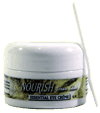Bottom line, there is no safe way to get a tan
The following are some facts you should consider before worshiping the sun.
 According to the Melanoma Research Foundation (MRF) as many as 90% of melanomas are estimated to be caused by ultraviolet (UV) exposure from the sun and from artificial sources such as tanning beds. The World Health Organization’s International Agency for Research on Cancer (IARC) classifies tanning beds and tanning lamps into its highest cancer risk category.
According to the Melanoma Research Foundation (MRF) as many as 90% of melanomas are estimated to be caused by ultraviolet (UV) exposure from the sun and from artificial sources such as tanning beds. The World Health Organization’s International Agency for Research on Cancer (IARC) classifies tanning beds and tanning lamps into its highest cancer risk category.
Don’t believe everything you hear
The tanning industry has tried to tell consumers that vitamin D is necessary and that it should be sought from tanning beds. However, the majority of tanning bulbs actually emit UVA radiation, and UVB radiation is needed for the body to produce vitamin D. That fact is, all necessary vitamin D can be found in a healthy diet or from a vitamin supplement. If you are concerned about your vitamin D levels, consult your doctor, not a tanning salon!
This is mind blowing
Research indicates that just one blistering sunburn can double your chances of developing melanoma later in life. In addition, using tanning beds before age 30 increases your risk of developing melanoma by 75 percent. Occasional use of tanning beds triples your chances. Research also suggests the more sessions, hours and years spent tanning, the higher the risk of developing melanoma and other types of skin cancer.
What actually is tanned skin?
Tanned skin is a result of damage to skin cells. Research suggests that the cumulative damage to skin cells can lead to wrinkles, age spots, premature aging and skin cancer. Tanning is so dangerous that several countries, including Brazil, have made it completely illegal.
Intentional UV tanning of any kind, in the sun or in a tanning bed, is never recommended.
How about sunless tanning products?
To reduce the dangers of indoor tanning some manufacturers have manufactured topical sunless tanning products so you can get a tanned appearance without UV exposure. A concern has been noted that dihydroxyacetone (DHA), a commonly used ingredient in sunless tanning products and has been approved by FDA for use is cosmetics and drugs for external application only. The concern lies in using the product in spray tanning booths, inhalation is usually unavoidable.
Over the counter sunless tanning creams and lotions is an option for those of you who want to have the appearance of tanned skin while avoiding the risks of UV rays or inhaled DHA.







